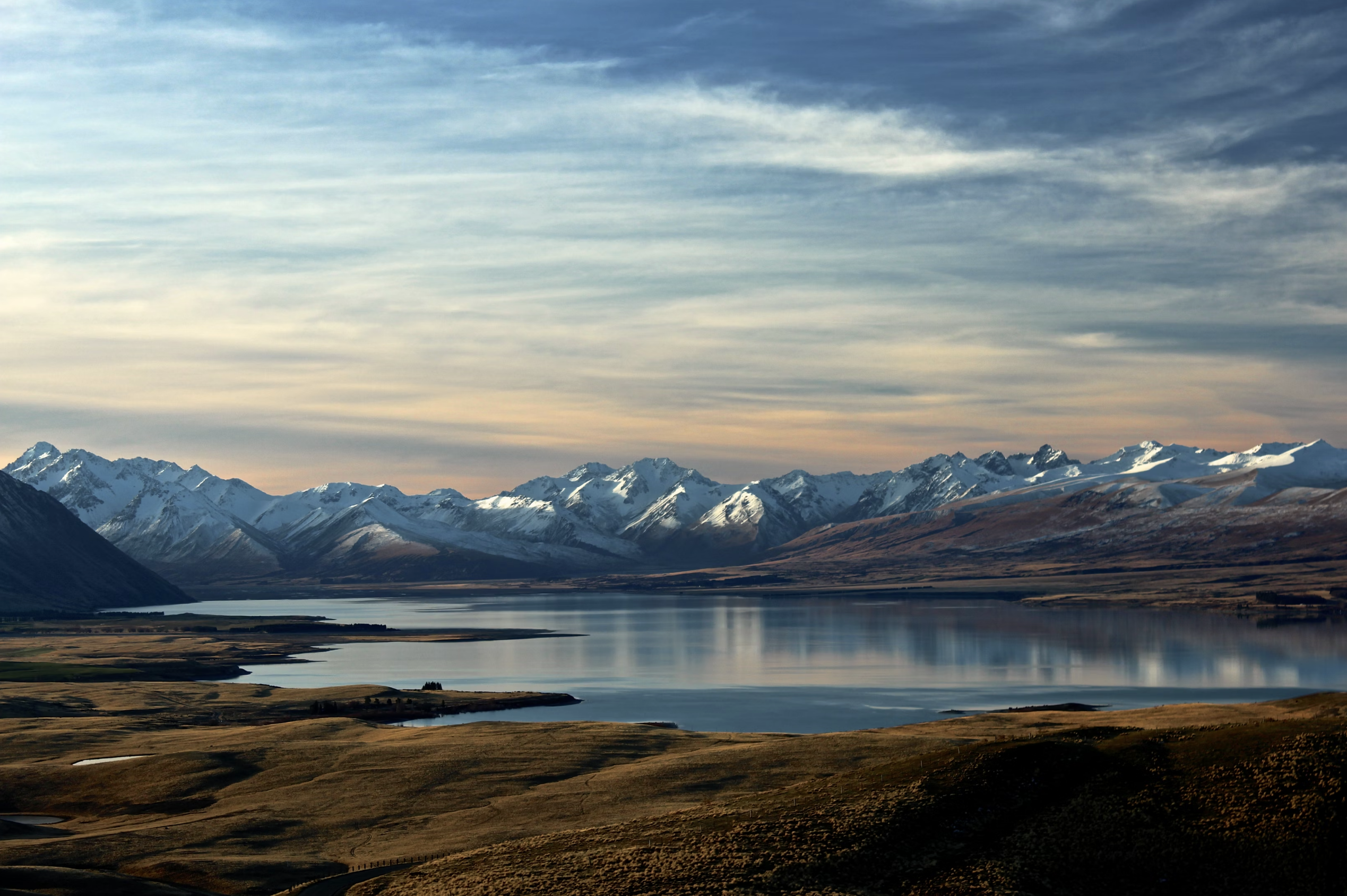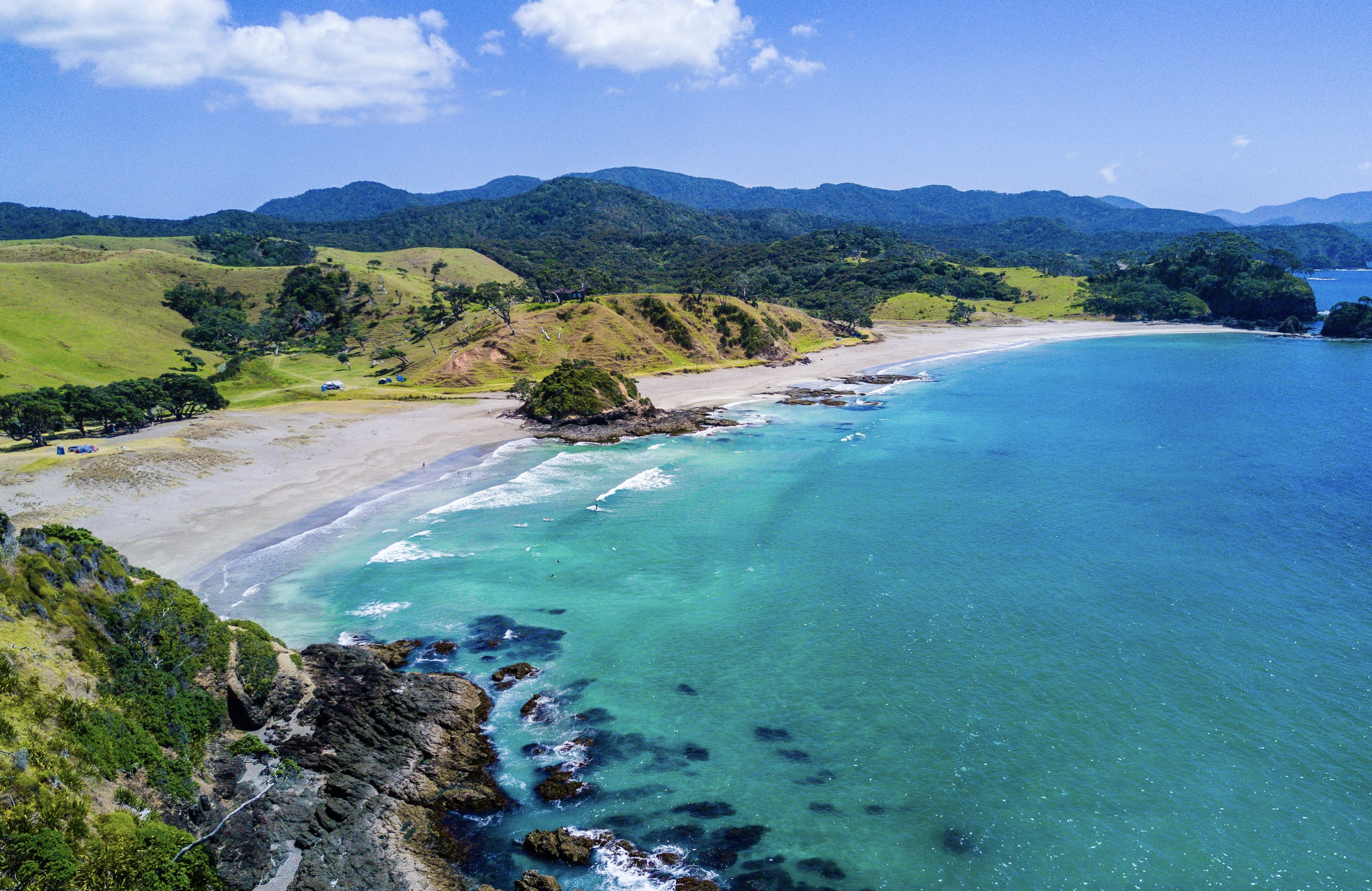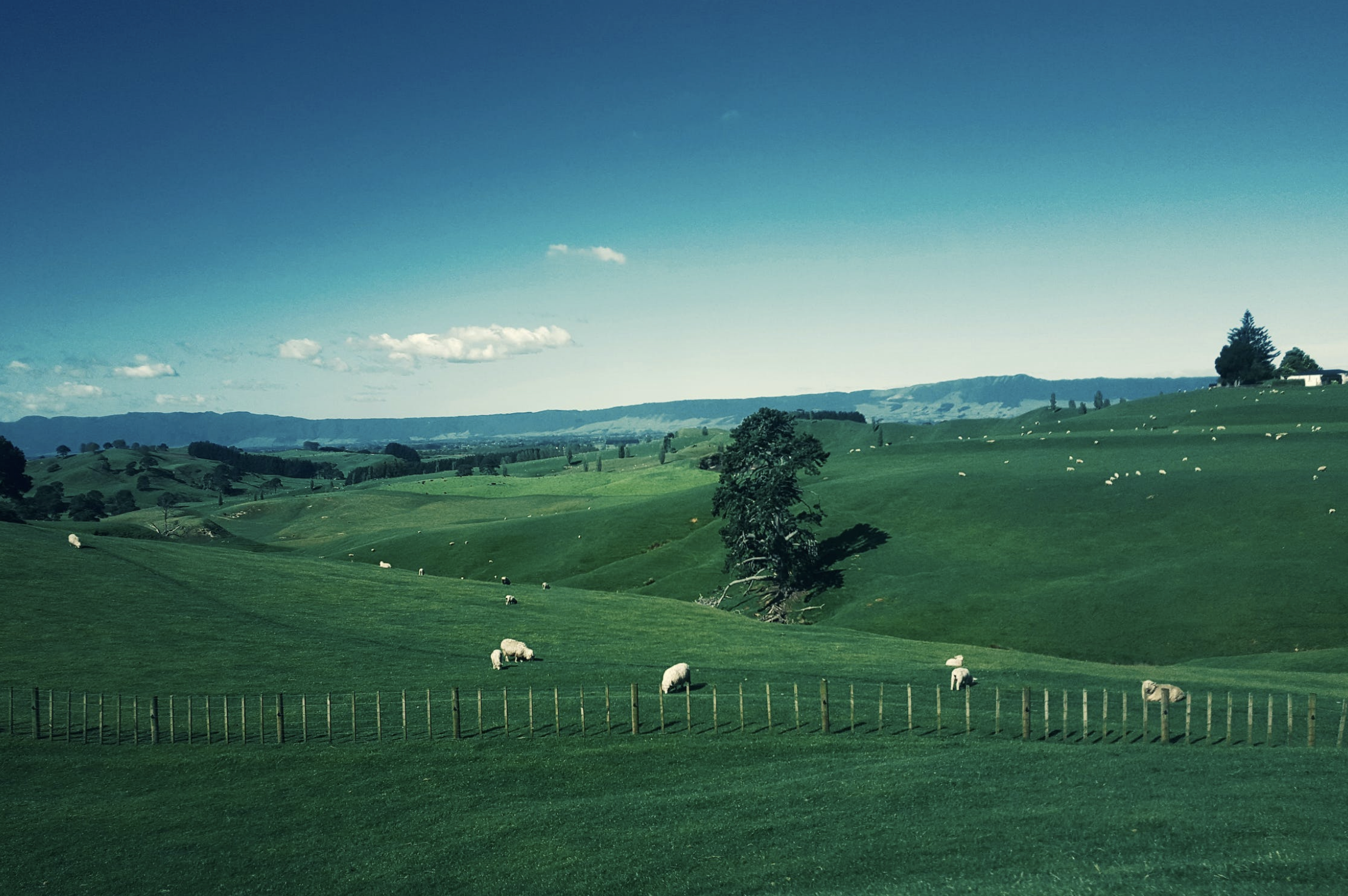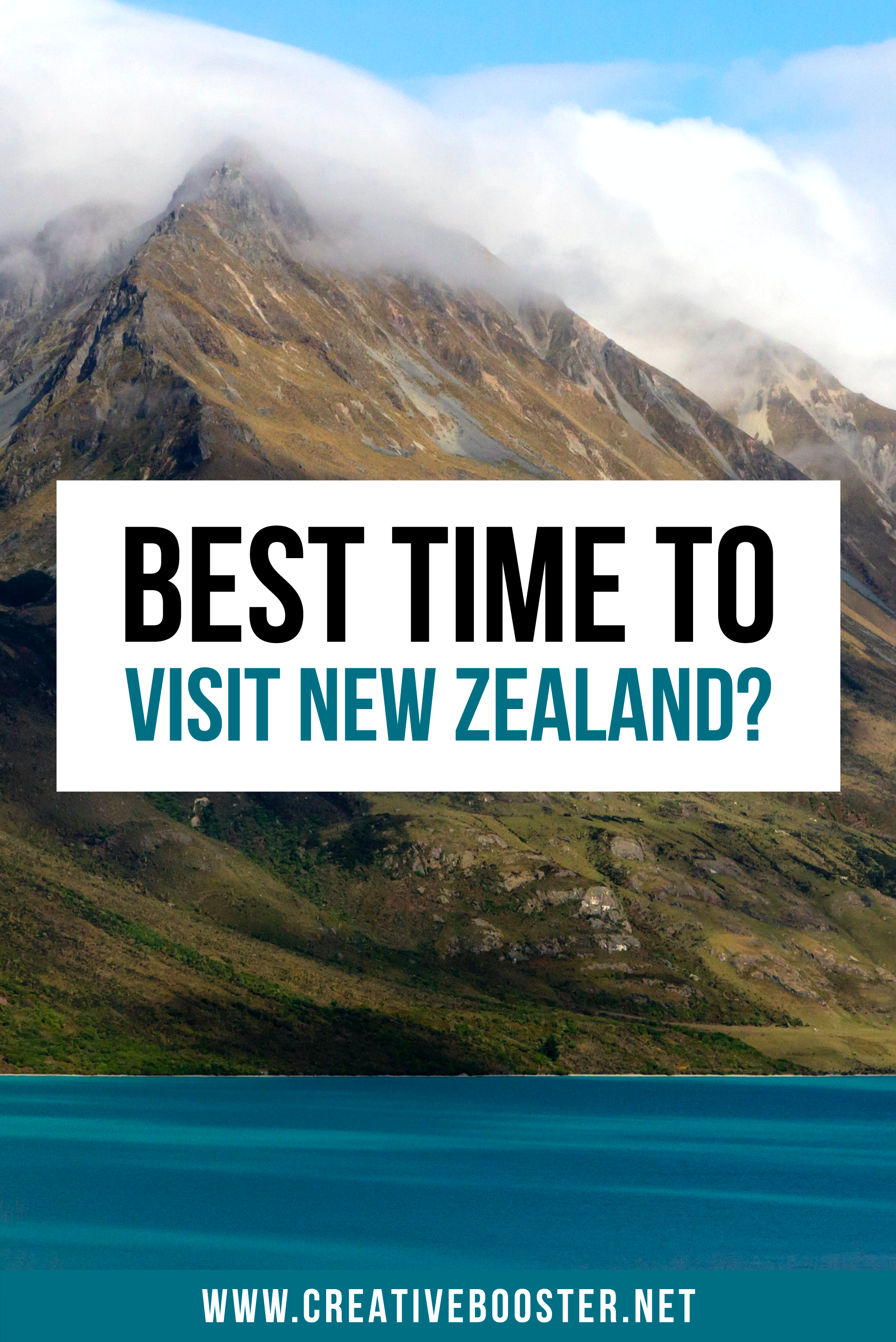This post may contain affiliate links. If you click one, we may earn a commission at no cost to you. Here's more details on how we make money.
New Zealand is a stunning destination featuring diverse landscapes and outdoor adventures. To truly enjoy your visit, it's essential to know the best time to experience what the country has to offer.
Since New Zealand is located in the Southern Hemisphere, its seasons are opposite of those in the Northern Hemisphere, with summer from December through February, and winter from June through August.
When planning your trip, consider not only the weather but also regional climate variations and seasonal activities.
The country's temperate climate makes it an ideal destination year-round, and each season has its unique charm. Summer offers warm temperatures and plenty of sunshine, perfect for exploring beaches, hiking, and other outdoor activities.
Spring and fall bring milder weather, making it ideal for visiting wineries and attending local festivals. Winter transforms the countryside into a snowy wonderland, offering ample opportunities for skiing and other winter sports.
The perfect time to visit largely depends on your preferences and the type of activities you wish to enjoy.
Additionally, New Zealand boasts numerous regional variations, which means that even within the same season, weather and climate conditions can vary greatly across the country.
Therefore, it's crucial to research the specific areas and activities you'd like to experience during your visit, and plan accordingly to make the most of your trip.
Key Takeaways
- New Zealand's seasons are opposite of the Northern Hemisphere, each offering unique experiences and activities
- Consider regional climate variations when planning your visit to ensure a comfortable travel experience
- Summer, spring, fall, and winter all host various events and activities, so decide the best time based on personal preferences
Understanding New Zealand's Seasons
New Zealand experiences four distinct seasons, much like many other countries. However, it is located in the southern hemisphere, which means its seasons are opposite to those in the northern hemisphere. This guide will help you better understand the seasons in New Zealand and plan your visit accordingly.
Summer in New Zealand
Summer in New Zealand occurs between December and February. During this time, you can expect temperatures to range between 20°C to 30°C (68°F to 86°F). Summer is an excellent time for outdoor activities, such as hiking, fishing, and swimming.
The long daylight hours, typically up to 15 hours of sunshine, provide ample time for you to explore the country's stunning landscapes. However, be prepared for occasional rainfall, as the weather can be unpredictable.
Key Points:
- Months: December to February
- Temperature: 20°C to 30°C (68°F to 86°F)
- Activities: Hiking, fishing, swimming, sunbathing
Autumn Wonders
Autumn, or fall, runs from March to May in New Zealand. The temperatures range from 7°C to 21°C (45°F to 70°F), making it a mildly cool and comfortable season for visiting. You can take advantage of fewer crowds and lower prices during this time.
The breathtaking foliage makes it an ideal time for photography enthusiasts and those looking for a serene getaway. With less rainfall than other seasons and cooler temperatures, it is perfect for exploring New Zealand's scenic trails and wineries.
Key Points:
- Months: March to May
- Temperature: 7°C to 21°C (45°F to 70°F)
- Activities: Photography, nature walks, wine tasting
Winter Magic
New Zealand's winter lasts from June to August, with temperatures ranging from -1°C to 15°C (30°F to 59°F). During this time, snow covers the mountain regions, transforming the landscape into a winter wonderland. Winter is the best time to visit if you're interested in skiing or snowboarding at one of the country's many ski resorts. Pack warm clothing, as temperatures can drop significantly, particularly in the South Island.
Key Points:
- Months: June to August
- Temperature: -1°C to 15°C (30°F to 59°F)
- Activities: Skiing, snowboarding, snowshoeing
Spring Blossoms
Spring in New Zealand runs from September to November. During this time, you can expect temperatures to range from 9°C to 17°C (48°F to 63°F). The landscape comes alive with blooming flowers and newly born wildlife. The relatively mild temperatures are conducive to exploring the outdoors, though rainfall can be unpredictable. This season is a lovely time to visit the country's beautiful gardens, forests, and parks.
Key Points:
- Months: September to November
- Temperature: 9°C to 17°C (48°F to 63°F)
- Activities: Garden visits, bird watching, hiking
Regional Climate Variations

North Island Climate
When planning your visit to New Zealand, it's important to take the climate into account. The North Island, including cities like Auckland and Wellington, typically experiences a subtropical climate. This means that the weather is generally mild and warm throughout the year, with some variations.
Winters are relatively mild, averaging around 10°C (50°F), while summers can reach around 20-25°C (68-77°F). The North Island also tends to have higher humidity levels, which can make the warmer months feel more uncomfortable.
South Island Weather
The South Island, on the other hand, has a more diverse climate. Cities like Christchurch and Queenstown see a greater range of temperatures and weather conditions.
You can experience relatively warm summers with temperatures around 20-25°C (68-77°F), but winters can be quite cold and dry, with temperatures dipping down to -3°C (26°F) or even lower in some areas like Fiordland particularly on the West Coast.
Keep in mind that mountain ranges running the length of both islands cast long rain shadows eastward, making those locations considerably drier.
Subtropical North to Alpine South
As you travel from the subtropical North Island to the alpine South Island, you'll notice significant changes in the landscape and climate. This means that when choosing the best time to visit New Zealand, you'll need to carefully consider the climate of the regions you plan to explore.
- North Island: Best for mild temperatures, subtropical conditions, and warmer waters for swimming and water sports, especially in the March to May period.
- South Island: Better suited for winter sports and activities, as well as those who prefer dry and colder climates, with stunning alpine scenery.
Keep in mind that the best time to visit New Zealand largely depends on your personal preferences and the activities you want to partake in during your trip. Make sure to pack accordingly for the regional climate variations and enjoy your time in this beautiful country!
Top Activities by Season

Beach Getaways
During the summer months of December to February, you can enjoy some of the best beach getaways in New Zealand. The warm weather and beautiful, sandy beaches make it the perfect time for outdoor activities such as swimming, sunbathing, and kayaking.
Some popular beach destinations include Bay of Islands, Coromandel Peninsula, and Abel Tasman National Park.
Skiing and Snow Sports
From June to August, winter takes over New Zealand, offering splendid skiing and snow sports opportunities. With its breathtaking snow-capped mountains, you can engage in various snow sports such as skiing, snowboarding, and even heli-skiing.
Head to popular ski areas like Queenstown, Wanaka, and Mount Ruapehu for your winter adventure.
Spring Hiking and Festivals
As the snow melts away and nature rejuvenates, September to November brings ideal conditions for hiking and exploring the outdoors. This is the time to experience New Zealand’s Great Walks, such as the famous Milford Track, Routeburn Track, and Tongariro Alpine Crossing.
Alongside these outdoor pursuits, you can also immerse yourself in the vibrant atmosphere of cultural festivals such as the Rotorua Mud Festival and Nelson Arts Festival.
Autumn Wine Tours
New Zealand is renowned for its exquisite wines, and March to May is a fantastic time to embark on wine tours across the country's many vineyards. Visit regions like Marlborough and Hawke's Bay to sample world-class wines and witness the golden hues of the autumnal vineyards.
Enhance your experience by pairing your tastings with delicious local food at nearby restaurants or joining harvest-themed festivals and events.
Remember to plan your visit according to the activities that appeal to you most and the seasonal experiences New Zealand has to offer.
Event Calendar Highlights

Summer and Christmas Events
During the summer season, Christmas and New Year celebrations take place throughout New Zealand. You can immerse yourself in a wide variety of outdoor events, including:
- Christmas markets and festive parades
- New Year's Eve countdowns and fireworks displays
- Beach and park gatherings with friends and family
Moreover, summer hosts various festivals, like the World Buskers’ Festival in Christchurch and Auckland's Laneway Festival.
Fall Cultural Festivities
Fall brings a cultural blend of events in New Zealand. In February, the country honors its rich history and cultural heritage during Waitangi Day. Celebrations include traditional Maori performances, historical re-enactments, and lively outdoor markets.
The arts scene also comes alive with exhibitions, theater, dance, and music performances that showcase local talent. Be sure to check the event calendars for a schedule of artistic offerings in various cities.
Winter Sports Competitions
Winter in New Zealand, from June to August, is the perfect time for ski and snowboard enthusiasts. Several winter sports competitions take place around the country, drawing top athletes and providing amazing spectating experiences for visitors.
Apart from the sports, you can also enjoy stargazing during the winter months, as the clear skies offer dazzling views of the night sky.
Spring Food and Wine Festivals
Spring brings food and wine festivals like the Wildfoods Festival in Hokitika, and the Wellington on a Plate event. These events allow you to taste local produce, learn about New Zealand's culinary traditions, and enjoy exciting cooking demonstrations by renowned chefs.
In addition, as the weather warms up, you can attend outdoor events like food markets and wine tastings that showcase the best of the region. Also, don't forget to take part in vibrant Easter celebrations and the Maori New Year, known as Matariki, usually occurring in late May or early June.
Traveling and Accommodation

Booking Ahead for Peak Season
During the peak season in New Zealand (December to February), you'll need to book your accommodation well in advance, as hotels and other lodgings fill up quickly. This also applies to popular tourist attractions, tours, and activities.
If you plan to travel by bus or fly within the country, it's a good idea to purchase your tickets beforehand to secure your preferred dates and avoid last-minute price increases. Keep in mind that schools are on holiday during this time, which means an influx of both local and international tourists leading to larger crowds at popular attractions.
Key takeaway: Book early to secure your preferred travel dates, accommodation, and tours during the peak season.
Enjoying Lower Prices in Shoulder Season
The shoulder season in New Zealand, which falls between March to May and September to November, offers the benefits of relatively good weather, fewer crowds, and lower prices on travel and accommodation. Visiting during these months allows you to enjoy a more peaceful experience, as there will be fewer tourists and school holidays are not in effect.
To make the most of your shoulder season visit, consider the following tips:
- Be flexible with your travel dates to take advantage of discounted rates on flights, hotels, and tours.
- Research local events and attractions that may be less crowded during this time.
- Speak to local tourism offices or hotels for insider information on the best deals and experiences available during shoulder season.
- Utilize travel aggregator websites to find the best offers on flights, hotels, and tours.
By planning your New Zealand visit during the shoulder season, you can enjoy a more authentic experience, less crowded attractions, and lower prices on travel and accommodation. So start planning your adventure now and explore everything that New Zealand has to offer during the perfect time of year for you.
Cultural Experiences and Local Traditions

Māori New Year and Waitangi Day
While visiting New Zealand, immerse yourself in the rich cultural experiences and local traditions that make this country unique. One of the most significant events on the Māori calendar is the Māori New Year, also known as Matariki.
This occurs when the Pleiades constellation becomes visible in the New Zealand skies, typically between late May and early June. During this time, you can witness vibrant cultural celebrations, including traditional Māori dance performances and kai (feasts) shared among communities.
Another important event is Waitangi Day, which takes place on February 6th to commemorate the signing of the Treaty of Waitangi in 1840. This national holiday is celebrated with various events, including kapa haka (traditional dance), live music, and food stalls serving delicious Māori cuisine.
Participating in these cultural experiences will give you a deeper understanding of the Kiwi people and their traditions.
Local Arts, Dance, and Music
New Zealand has a thriving arts scene that showcases traditional and contemporary culture. In addition to the unique Māori performing arts, you can experience a vibrant selection of local talent by attending events such as the Laneway Festival, which happens in Auckland during summer.
This festival features an exciting lineup of both international and local musicians, offering you an opportunity to discover new favorites.
Dance also plays an important role in the cultural fabric of New Zealand, encompassing traditional Māori dance forms like kapa haka and contemporary styles like ballet and contemporary dance.
Engage with the Kiwi dance culture by attending dance performances or, if you're feeling adventurous, participating in workshops to learn the moves yourself.
For those passionate about the arts, New Zealand offers a plethora of galleries, museums, and outdoor installations showcasing the work of local and international artists. Exploring these cultural venues will give you a taste of the country's diverse artistic styles and inspire you throughout your journey.
By immersing yourself in the numerous cultural experiences and local traditions available in New Zealand, you can enrich your visit and foster a deeper understanding of the remarkable people who call this beautiful country home.
Planning for Weather Patterns
Rainy Days and How to Enjoy Them
New Zealand's weather can be quite unpredictable, so it's essential to come prepared for rain, especially when visiting during the rainy season. In the North Island, the winter months, from June to August, tend to see more rainfall. Conversely, the South Island generally experiences its rainy season during November and April.
During rainy days, you can still have an enjoyable experience by visiting indoor attractions, such as museums, art galleries, and local cafes. It's also an excellent opportunity to explore New Zealand's thriving local craft beer scene or enjoy a wine tasting at a nearby vineyard.
Sunshine and Outdoor Excursions
For those seeking sunshine and outdoor activities, the best months to visit New Zealand are November and March. During these months, both the North and South Islands experience warm weather, perfect for exploring the great outdoors. However, if you're interested in winter sports, plan your visit from June to August, when New Zealand's ski resorts are in full operation.
To help you plan better, here is a brief guide to the average temperatures and precipitation in New Zealand:
| North Island | South Island | |
|---|---|---|
| Summer (Dec-Feb) | 20-25°C (68-77°F) | 19-23°C (66-73°F) |
| Winter (Jun-Aug) | 10-15°C (50-59°F) | 5-12°C (41-54°F) |
| Rainy Season | June-August | November-April |
In summary, the optimal time for your visit will depend on your preferred activities and the regions you'd like to explore. By keeping the North and South Island weather patterns in mind, you can ensure a memorable trip to New Zealand.
Worst Time to Visit New Zealand
The worst time to visit New Zealand is typically during its winter months, from June to August. During this period, the country experiences colder temperatures and shorter days, which can limit outdoor activities and exploration.
Additionally, mountainous regions are often covered in snow, making certain roads and trails less accessible. This season is less ideal for those who prefer milder climates and want to fully experience New Zealand's lush landscapes and outdoor adventures.
However, for ski enthusiasts, this could be the perfect time to enjoy the ski resorts, especially in the South Island.
Frequently Asked Questions
What is the ideal season to experience New Zealand's outdoor activities?
The ideal season for outdoor activities in New Zealand varies depending on the specific activity you're interested in. For those looking to participate in adventure sports and beach activities, the summer months (December to February) typically provide the most ideal conditions. Alternatively, if you're keen on skiing or snowboarding, the best time to hit the slopes is during the winter months of June to August.
Which part of the year offers the most cost-effective travel options for New Zealand?
The most cost-effective travel options for New Zealand can be found during the shoulder seasons of spring (September to November) and autumn (March to May). During these periods, accommodations and attractions tend to be less crowded and offer lower prices compared to the peak seasons.
What months typically have the best weather conditions in New Zealand?
The months with the best weather conditions in New Zealand are generally November and March. These months typically provide warmer temperatures and lower levels of precipitation, making them the perfect time to explore this beautiful country comfortably.
During which months should tourists avoid traveling to New Zealand due to poor weather?
While New Zealand is known for its variable weather, tourists should be particularly cautious about traveling during the winter months of June to August, especially in the remote and alpine regions. These months can bring harsh conditions, including heavy snowfall, icy roads, and reduced visibility due to fog.
Can tourists enjoy New Zealand's attractions comfortably in the shoulder seasons?
Yes, tourists can enjoy New Zealand's attractions comfortably in the shoulder seasons of spring and autumn. These periods offer moderate temperatures and fewer crowds, allowing for a more relaxed and authentic travel experience. While some attractions may not be operating at full capacity, most remain open and accessible.
What are the peak travel periods for New Zealand when tourist areas are most crowded?
The peak travel periods for New Zealand occur during the summer months (December to February) and the winter months (June to August) for snow sports. During these times, popular destinations such as Golden Bay, the Coromandel Peninsula, and the Bay of Islands can be more crowded, and accommodations and attractions may have higher prices and limited availability. It's recommended to book well in advance to secure the best deals and availability during these peak periods.


